The Sony ZV-E1 hit the market in April 2023 and is what Sony calls a Vlog camera that is targeted towards content creators.
Only a few months later in July 2023 the Sony A6700 was announced. The a6700 is more of a hybrid camera that is equally comfortable shooting stills as it is movies, but it also includes some Vlog features carried over from ZV-E1.
In this article I’ll be comparing the differences between these two mirrorless cameras and hopefully helping you to decide which camera is best for your own gear bag.
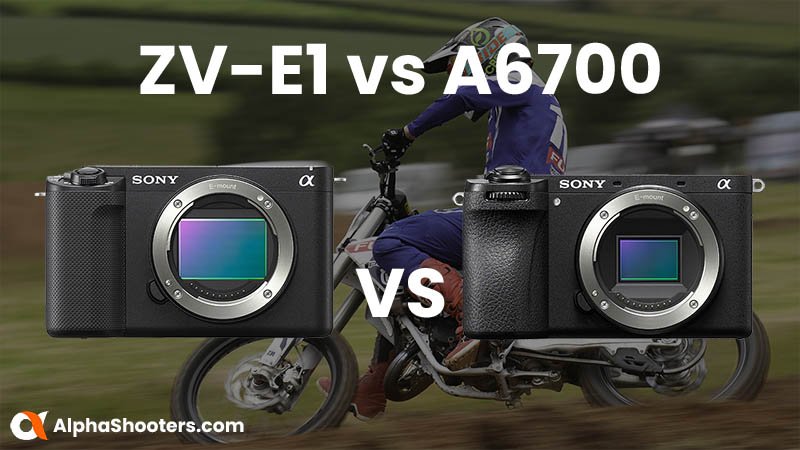
Table of Contents[Hide][Show]
Key Shared Features
Before we dive into the differences, here’s a list of the key features that they share in common:
- 14-bit RAW image files
- 4K/60p & 4K/120p
- 5 axis in-body stabilization
- Auto Framing
- Active Mode Stabilization
- Import LUT files
- S-Cinetone
- Microphone and headphone jacks (3.5mm)
- Stereo microphone and speaker
- Multi Interface Shoe with Digital Audio
- USB charging
- Dust-and moisture-resistant body
- NP-FZ100 battery
- Single slot for SD (UHS-I/II compliant) memory card
- Subject Detection: Human, Animal, Bird, Insect, Car, Trains, Plane
- Load / Save settings from memory card
- Anti-Flicker & Variable Shutter
- In-camera time-lapse
- Live Streaming / Webcam
- Focus Bracketing
- Sony Creators App Support
- Firmware updates via memory card
Key Spec Comparison
Now just a quick look at how the key specifications stack up.
| Specification | Sony ZV-E1 | Sony A6700 |
|---|---|---|
| Sensor: | 12.1 MP Full-Frame back-illuminated Exmor R CMOS | 26.0 MP APS-C back-illuminated Exmor R CMOS |
| Processor: | BIONZ XR | BIONZ XR |
| Stabilization (IBIS): | Yes (5-axis) | Yes (5-axis) |
| Shutter: | Electronic | Electronic / Mechanical |
| Electronic Viewfinder (EVF): | No EVF | 2 359 296 dots |
| Display (LCD): | 1 036 800 dots vari-angle | 1 036 800 dots vari-angle |
| ISO Sensitivity Stills: | ISO 80-102400 (expandable to ISO 40 – 409600) | ISO 100 – 32000 (expandable to ISO 50 – 102400) |
| ISO Sensitivity Movies: | ISO 80-102400 (expandable to ISO 40 – 409600) | ISO 100–32000 |
| Movie Resolution Max: | 4k60p / 4k120p (4k120 requires free license upgrade) | 4k60p / 4k120p |
| Maximum Video Bit Depth (Internal) | 10-bit | 10-bit |
| Memory Cards: | UHS-I/II SD cards | UHS-I/II SD cards |
| Memory Card Slots: | One | One |
| Shutter Speed Still Images: | 1/8000 to 30 sec | 1/4000 to 30 sec, Bulb (1/8000 electronic). |
| Max Frames Per Second: | 10 fps | 11 fps |
| Price (MRRP) Body Only: | $2,198.00 / £2,349.00 | $1,398.00 / £1,449.00 |
| Price Check: | B&H Photo | Amazon | B&H Photo | Amazon |
Key Differences
Now let’s take a much closer look at the key differences between these two cameras.
Sensor and Processor
The first and most important difference between these two cameras is that the ZV-E1 has a full-frame sensor whereas the a6700 has a smaller APS-C sized sensor.
Full-frame sensors are physically larger than APS-C sensors but bigger isn’t always better and each format has its own distinct advantages.
The table below compares the size of each cameras sensor.
| Camera | Sensor Size | Megapixels | Resolution (3:2) |
|---|---|---|---|
| Sony ZV-E1 | Full-Frame (35.9 mm × 23.9 mm) | 12.1 MP | 4240 x 2832 |
| Sony A6700 | APS-C size (23.3 mm × 15.5 mm) | 26.0 MP | 6192 × 4128 |
The ZV-E1 features a 12.1 megapixel full-frame 35mm back-illuminated Exmor R CMOS sensor that provides high-speed readout, high sensitivity, low noise, and highly accurate color reproduction.
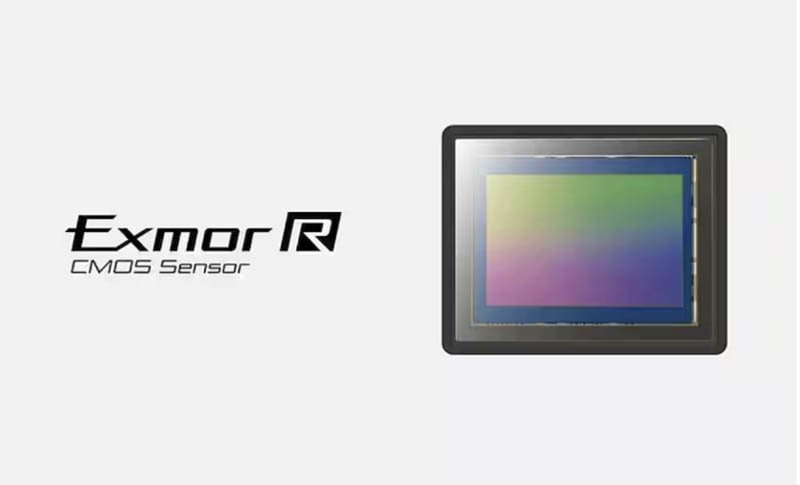
The Sony a6700 features a physically smaller but larger megapixel 26.0 MP APS-C Back-illuminated Exmor R CMOS sensor that can also be found in the Sony FX30 cinema camera.
With only 12.1 megapixels the pixel size of the ZV-E1’s sensor is much larger at 8.40µm compared to the 26 megapixel sensor in the a6700 which has a pixel size of 3.76µm. The larger pixel size really helps with light gathering which is clear when we look at just how low each of these cameras can focus:
- ZV-E1: EV-6 to EV20 (ISO100 equivalent with F2.0 lens attached)
- A6700: EV-3 to EV20 (ISO 100 equivalent with F2.0 lens attached)
The ZV-E1 has a full 3 stop advantage over the a6700 when focusing in low light.
Both cameras share the same BIONZ XR™ processor that delivers up to eight times more processing power than the BIONZ X found in their predecessors.

ISO Sensitivity
When it comes to comparing the ISO performance, the ZV-E1 has a wider ISO range thanks to its larger full-frame sensor and pixel size which has much better light gathering capabilities.
| Sony ZV-E1 | Sony A6700 | |
|---|---|---|
| Normal ISO (Stills): | ISO 80 – 102,400 | ISO 100 – 32,000 |
| Expanded ISO (Stills): | ISO 40 – 409,600 | ISO 50 – 102,400 |
| Normal ISO (Movies): | ISO 80 – 102,400 | ISO 100 – 32,000 |
| Expanded ISO (Movies): | ISO 40 – 409,600 | ISO 100 – 32,000 |
Still Image Recording Formats
Both cameras support compressed RAW, lossless compressed RAW, JPEG and 10-bit HEIF files. The ZV-E1 also supports uncompressed RAW files that the a6700 does not.
Both cameras also have 3 options for JPEG/HEIF quality: Extra fine/Fine/Standard. The a6700 also gains an additional Light option that generates less data.
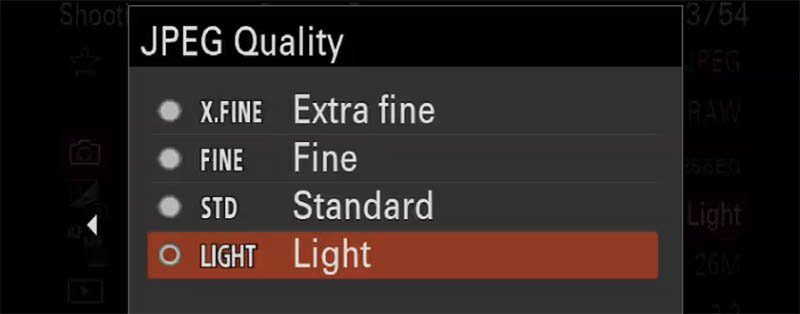
Video
Both cameras support 4K60p and 4K120p. However, 4K120p was only added to the ZV-E1 after launch and it requires a free software update to enable it.
The ZV-E1 can shoot 4K60p with no sensor crop and 4K120p with a small 1.1x crop. In contrast the a6700 can shoot 4K60p with a small 1.04x crop but 4K120p is with a much larger 1.58x crop.
It’s also important to note that the field of view will be different between these two cameras, since the ZV-E1 has a full-frame sensor and the a6700 has an APS-C (1.5x crop) sensor.
S&Q mode on each camera enables recording of slow or quick motion sequences in camera with up to 240 FPS in Full HD. The ZV-E1 requires a free software update to enable it.
Both cameras support high-quality XAVC S-I (All-Intra) and XAVC HS formats with 10-bit 4:2:2 color sampling. Picture Profiles, with settings such as S-Cinetone, S-Log2 and S-Log3 are also supported by both.
A HDMI micro connector (Type-D) is present on both cameras along with 3.5mm stereo microphone and headphone jacks. There’s also a Multi Interface Shoe with Digital Audio Interface.
The following video specific features are available on both cameras:
- Active Stabilization
- Focus Breathing Compensation
- Import User LUT files
- AI Auto Framing
- Focus MAP
- AF Assist
- Time Code (TC)
- In-Camera Time-Lapse Creation
- No record time limit
The ZV-E1 gets some additional video features that you wont find on the a6700, let’s take a closer look at these now.
Product Showcase
The Product Showcase Setting makes it much easier to shoot product review videos. The ZV-E1 will smoothly switch focus from your face to a product held in front of the lens and then back to your face when the product is moved away.
Background Defocus
A dedicated background defocus button lets you quickly change the level of defocus in the background simply by pressing the button while shooting still images or movies.
Cinematic Vlog Setting
The Cinematic Vlog Setting provides an intuitive way to create scenes that look like feature movies. By choosing a Look, Mood and AF transition speed, anyone can create cinematic vlog footage that ideally matches the scene and creative intent.
Framing Stabilizer
The Framing Stabilizer feature automatically keeps the subject’s position in the frame constant. Advanced AI-based subject recognition technology works with the camera’s Dynamic active Mode image stabilization to reliably keep the subject in the frame during handheld shooting. This only works in movie mode and the frame is cropped from 4K images, resulting in reduced angle of view.
Multiple Face Recognition
In the [Intelligent Auto] mode, when the ZV-E1 recognizes multiple people, it automatically changes the aperture so that the recognized faces can be captured clearly and in focus. So you don’t have to worry that only people in the foreground are in focus while the faces of people in the back are out of focus.
APS-C / Super 35 Mode
The ZV-E1 features an APS-C / Super 35 Mode that allows you to shoot with full-frame lenses with a crop factor of 1.5x, or attach an APS-C lens and not worry about seeing any black bars because it doesn’t cover the full-frame sensor.
You won’t find an APS-C / Super 35 Mode on the a6700 because it’s an APS-C camera and this is the default shooting mode.
Autofocus
Both cameras offer impressive autofocus and tracking features thank to their BIONZ XR processors and an additional AI Processing chip.
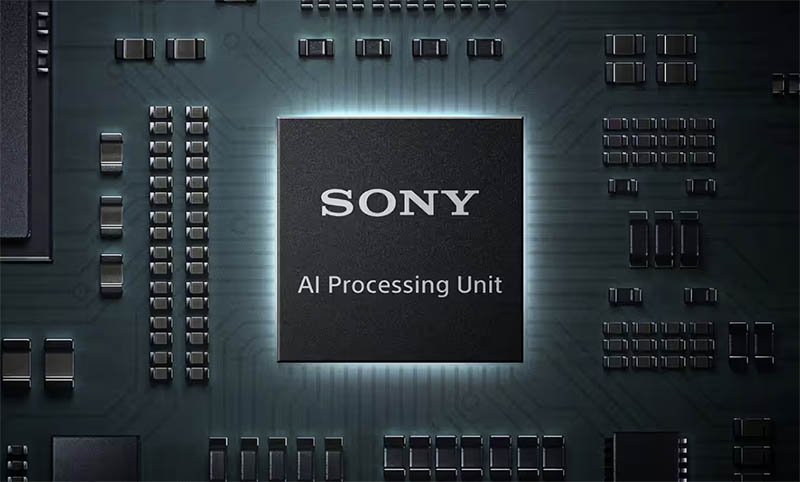
Both cameras can quickly recognize humans, animals, birds, insects, cars, trains and airplanes and track them in real-time.
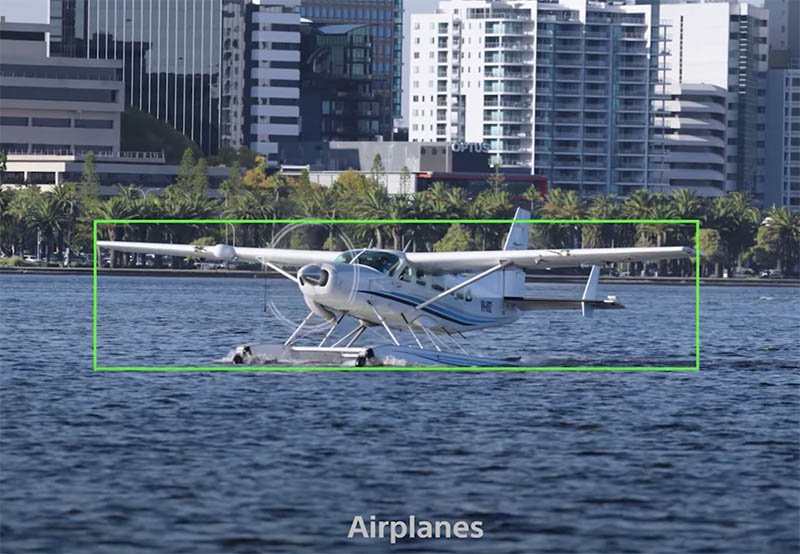
Phase Detection Points
The ZV-E1 features 759 phase detection points across the frame for stills and 627 points when shooting movies. In APS-C mode with a full frame lens you get 713 phase detection points and with an APS-C lens 575 points.
The a6700 also has 759 phase detection points covering approximately 93% of the image area when shooting stills. For shooting movies this reduces to a maximum of 495 points.
Phase Detect Autofocus Aperture Limit
With the ZV-E1 when you are shooting with an F-value greater than F11 in [Continuous Shooting: Hi+], [Continuous Shooting: Hi] or [Continuous Shooting: Mid] mode, the slower contrast detection is used and the focus is locked to the setting in the first shot.
With the A6700 you can shoot with phase detect autofocus all the way down to F22 before contrast detection kicks in and the focus is locked to the setting in the first shot.
Lowlight AF Performance
I’ve already touched on this earlier but it’s worth mentioning again here. When auto focusing in low light the Sony ZV-E1 has a three stop advantage over the a6700:
- ZV-E1: EV-6 to EV20 (ISO100 equivalent with F2.0 lens attached)
- A6700: EV-3 to EV20 (ISO 100 equivalent with F2.0 lens attached)
Shutter
There’s another big difference here because Sony has decided to remove the mechanical shutter from the ZV-E1, leaving only the electronic shutter. The a6700 on the other hand features both a mechanical and an electronic shutter.
Eliminating the mechanical shutter from the ZV-E1 does come with limitations:
- You can’t avoid rolling shutter or banding
- Flash sync speed is slower (1/30s vs 1/250s)
- No bulb mode
The ZV-E1 has a maximum shutter speed of 1/8000s when shooting stills with its electronic shutter.
The a6700 can also shoot up to 1/8000 sec but only when utilizing its electronic shutter, its mechanical shutter is limited to 1/4000 sec.
Both cameras allow you to set the shutter speed to a maximum of 30 seconds. However, the a6700 also has a bulb mode so that you can set your shutter speed to be as long as you like but only when using the mechanical shutter. The ZV-E1 is does not include a bulb mode since it has no mechanical shutter.
To help reduce flickering from artificial light sources (such as fluorescent or LED light), both cameras support variable shutter (Var. Shutter). This allows you to more finally adjust the shutter speed and observe the effects of flickering on the camera’s monitor. This is supported for both stills and movies.
The a6700 offers an additional anti-flicker shooting mode which can time the shooting of images to moments when flickering will have less of an impact by detecting the flickering frequency automatically. This is limited to the mechanical shutter and stills only.
Drive Speed & Buffer
The ZV-E1 can shoot a maximum of 10 frames per second with its electronic shutter. However, if you shoot in uncompressed RAW, lossless compressed RAW, uncompressed RAW + JPEG or lossless compressed RAW + JPEG then the maximum frame rate drops to 6 fps.
The a6700 supports a maximum frame rate of 11 frames per second with both its mechanical and electronic shutter. If you shoot in lossless compressed RAW the frame rate will drop but it’s not clear what to. I’ll hopefully be able to test this once I have the camera in my hands.
Buffer
There’s a very big difference in the buffer capabilities between these two cameras, this is mainly because the 12.1 MP sensor in the ZV-E1 generates much smaller file sizes.
| JPEG L Extra Fine | Uncompressed RAW | Compressed RAW | Lossless Compressed RAW | HEIF | |
|---|---|---|---|---|---|
| ZV-E1 | Over 1000 | Over 85 | Over 1000 | Over 1000 | |
| A6700 | 143 | – | 59 | 23 |
If you are shooting a lot of continuous bursts then the ZV-E1 comes out on top. Although with it being a Vlog focused cameras I expect this will rarely be fully utilized.
Electronic Viewfinder and LCD Display
This is where we see a very big difference in the physical design between these two cameras, because the ZV-E1 does not feature an electronic viewfinder, only an LCD display.
Electronic Viewfinder (EVF)
The a6700 features a 0.39 inch viewfinder with a resolution of 2.36 million dots and a magnification of 0.70x. It supports both a 60fps and a higher 120fps mode to help display your subject’s movements more smoothly. The viewfinder is located on the top left of the camera
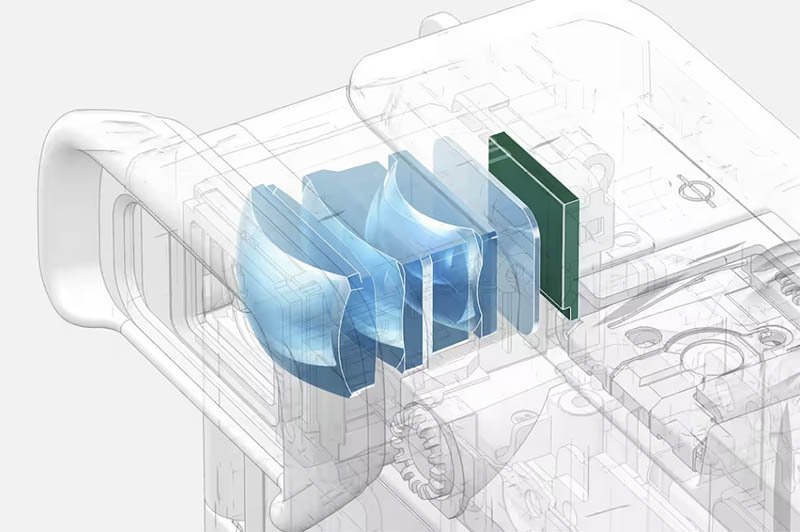
LCD Display
Both cameras feature a touch compatible 7.5 cm (3.0-type) fully articulating display with 1.04 million dots.
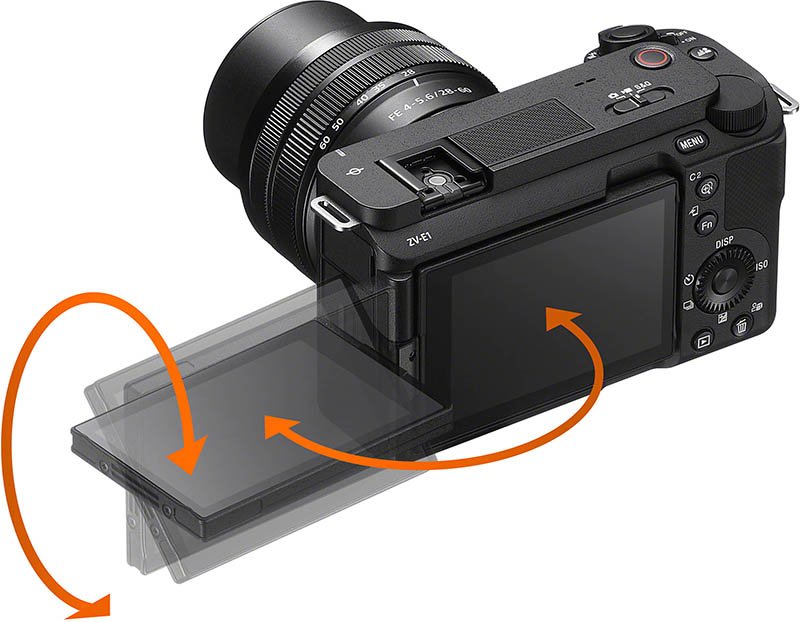
Camera Body & Controls
One would expect that the ZV-E1 with its larger full-frame sensor would have a larger body than the smaller APS-C sensor in the a6700. However, it’s actually a little smaller in width and depth than the a6700, although its lack of viewfinder and mechanical shutter helps to bring the dimensions and weight down.
The dimensions and weights of each camera are as follows:
- ZV-E1: W/H/D 121.0 x 71.9 x 54.3 mm, (approx. 483 g / 1 lb 1.1 oz with battery and memory card)
- A6700: W/H/D: 122.0 x 69.0 x 75.1 mm, (approx. 493 g / 1 lb 1.4 oz with battery and memory card)
Sony ZV-E1
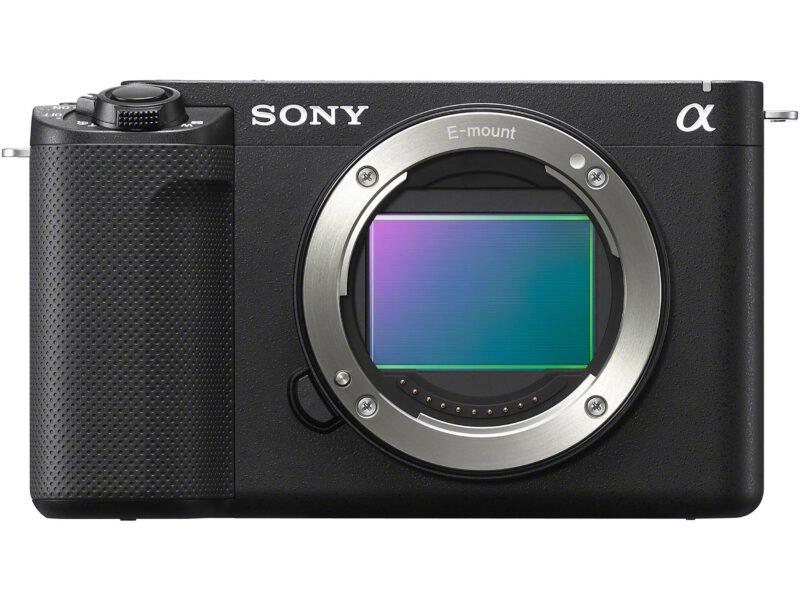
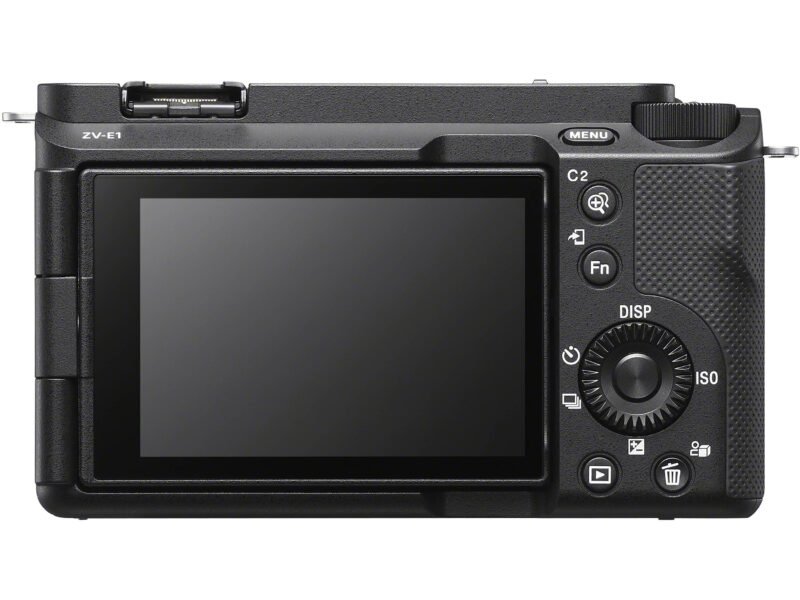



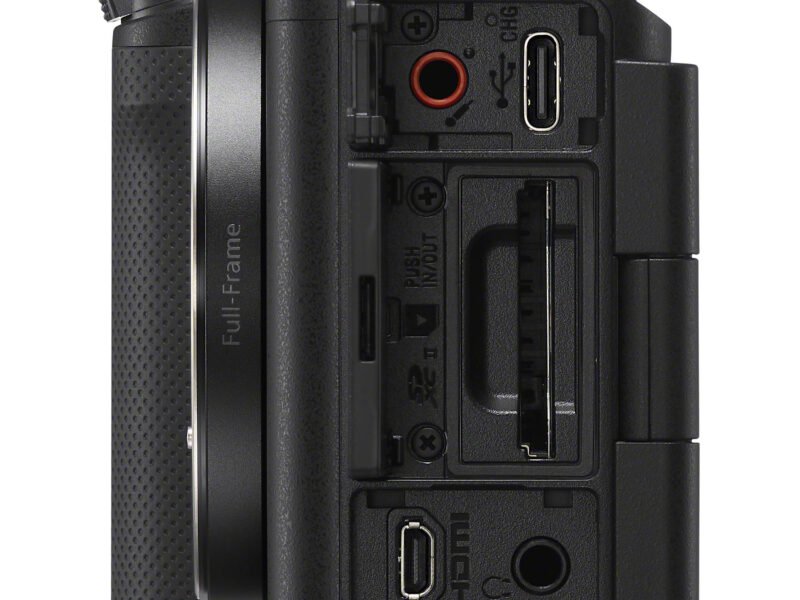

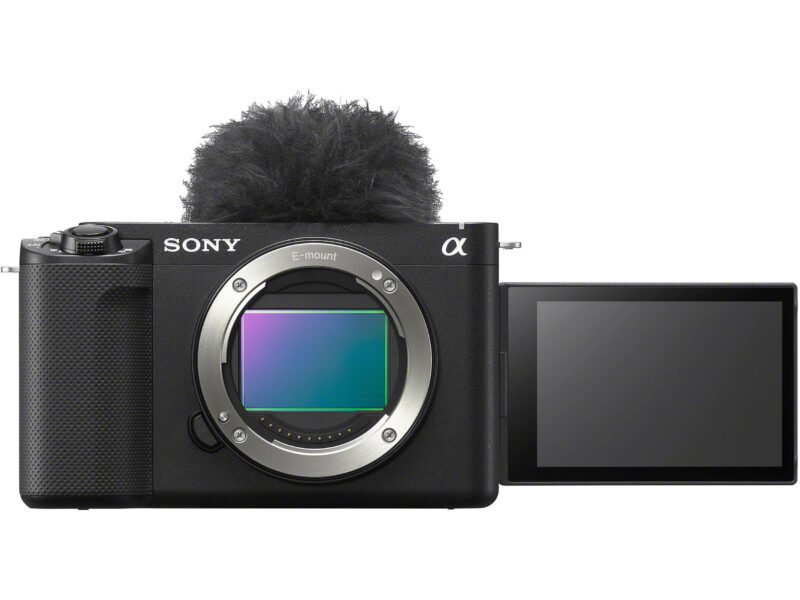
Sony A6700
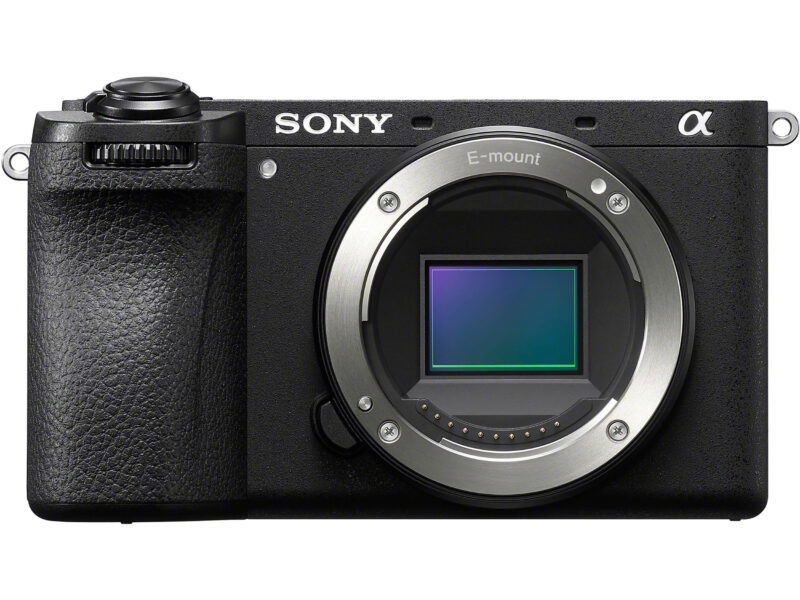
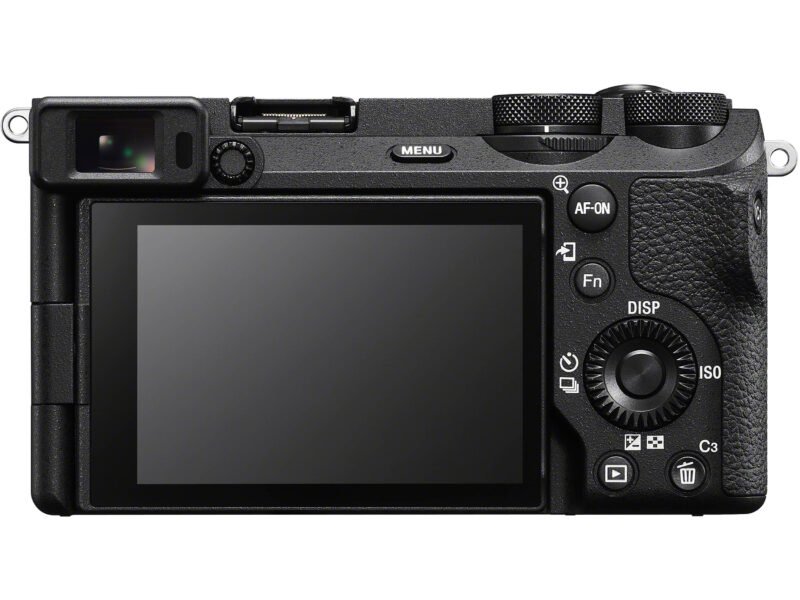
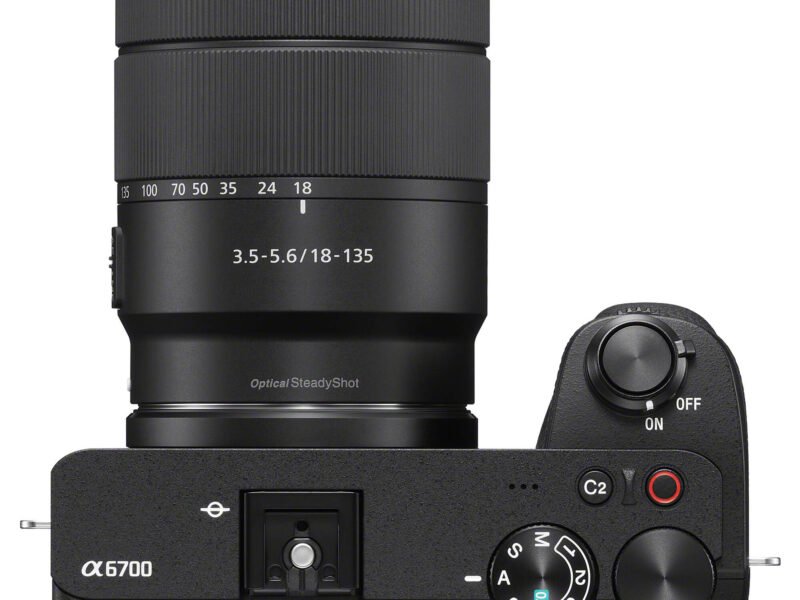

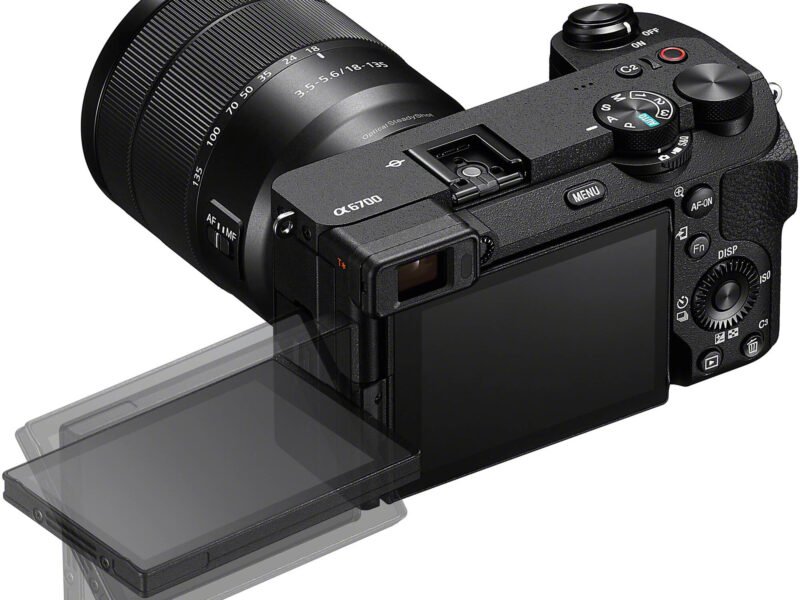
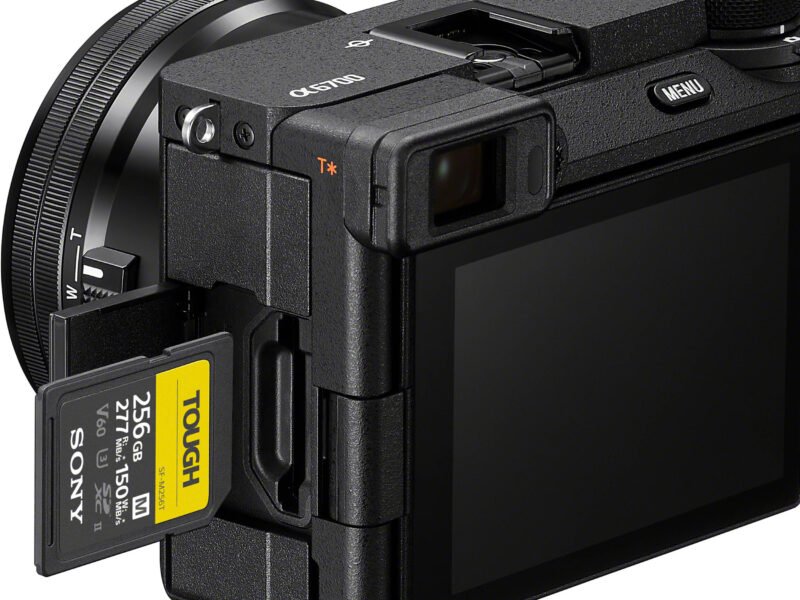
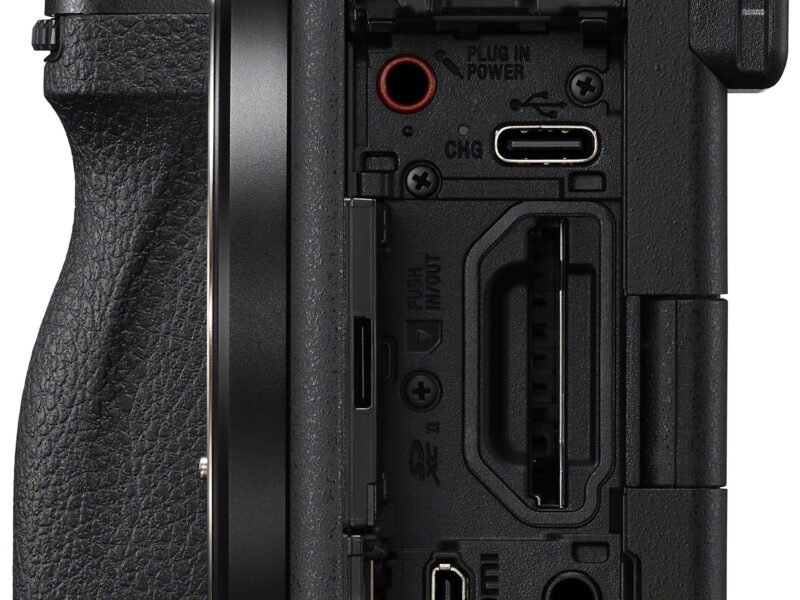


Looking a little more closely at the two camera bodies it’s hard not to spot the most noticeable differences.
As already discussed, the ZV-E1 is missing the electronic viewfinder that you’ll find on the a6700.
If we look at the top of the camera first you’ll see that the ZV-E1 features an intelligent 3 capsule microphone. You can set the microphone’s directivity to Front, Rear, All Directions or Auto. The a6700 only features a basic stereo microphone that is visible on the front of the camera just above the lens mount bracket.
The next big difference is that you’ll find a zoom rocker switch on top of the ZV-E1 which you won’t find on the a6700. The record button is larger on the ZV-E1 and you’ll also find a C1 button (Custom button 1) which by default is assigned as the (Background Defocus) button.
Both cameras have a Still/Movie/S&Q switch but on the a6700 this is an extra dial below the main mode dial that allows you to have 3 dedicated memories for stills, movies and S&Q. The ZV-E1 does not have a mode dial.
On the front of the cameras you’ll notice that the ZV-E1 does not have the front control dial at the top of the grip that you can find on the a6700. Both cameras feature a self-timer lamp / recording lamp on the front.
The rear of the cameras are fairly similar although the ZV-E1 is missing a dedicated AF-ON button although this could easily be programmed into one of the other buttons if needed.
Finally the grip is a lot larger on the a6700 which should make this the more comfortable camera to hold for longer periods of time or if you are using larger zoom lenses such as the Sony FE 200-600 (B&H Photo).
Full Time DMF
Full Time DMF is only available on the a6700. This works when shooting stills with AF-C or AF-S autofocus. With DMF you can rotate the lens’s focus ring to switch to manual focus mode at any time. The ZV-E1 does not support full-time DMF unless you are using a lens that supports this feature.
Memory Cards
Both cameras feature a single memory card slot on the side of the camera that supports UHS-I / II SD cards.
To find out which are the best memory cards to use in the ZV-E1, please visit my ZV-E1 Memory Card Guide.
Or visit my Sony A6700 Memory Card Guide to learn more about the best memory cards for the a6700.
Battery Life & USB Charging
Both cameras support the Sony NP-FZ100 battery and in-camera charging via USB. However the battery life for shooting stills and movies does vary a little.

With the ZV-E1 you can shoot approx. 570 shots (LCD monitor) (CIPA standard) with a full battery. The a6700 can shoot approx. 550 shots (Viewfinder) and approx. 570 shots (LCD monitor) (CIPA standard).
For actual movie recording the ZV-E1 will record for approx. 95 min (LCD monitor) (CIPA standard). The a6700 will get you approx. 95 min actual (Viewfinder) or approx. 100 min (LCD monitor) (CIPA standard).
Both cameras support USB PD (Power Delivery), enabling rapid battery charging directly within the camera body via USB-C.
Connectivity
Both cameras feature the same connectivity options.
- 2.4 / 5 Ghz Wi-Fi
- Bluetooth standard Ver. 4.2
- Micro HDMI port (type D micro jack)
- SuperSpeed USB-C 5 Gbps (USB 3.2)
- Microphone jack (3.5 mm)
- Headphone jack (3.5 mm)
Both cameras also support Sony’s newer Creators App for remote control and file management.

The Sony RMT-P1BT Bluetooth Remote (B&H Photo | Amazon) is also supported by both cameras.
What’s in the Box
The box contents of each camera are very similar except the ZV-E1 include a wind shield and a wind shield adapter. Neither camera includes a USB Adaptor or a Micro USB cable (B&H Photo).
| Sony ZV-E1 | Sony A6700 |
|---|---|
| Sony ZV-E1 camera body | Sony A6700 Body |
| Rechargeable Battery NP-FZ100 | Rechargeable Battery NP-FZ100 |
| Shoulder strap | Shoulder strap |
| Wind Screen | Body cap |
| Wind Screen Adaptor | Accessory shoe cap |
| Body cap | Eyepiece cup |
| Accessory shoe cap |
Price
The full-frame sensor in the ZV-E1 is the main reason why this camera will cost you around $800 more than the a6700.
- The ZV-E1 has an MRRP of: $2,198.00 / £2,349.00 (body-only)
- The A6700 has an MRRP of: $1,398.00 / £1,449.00 (body-only)
But you will also need to factor in the cost of purchasing full-frame lenses which are typically more expensive than APS-C lenses. You might find my Sony E-Mount Lenses List helpful for a quick overview of the lenses available.
However, it’s definitely worth checking the latest prices because you never know when a deal might be running.
Please check my deals page for all of the latest Sony offers or head over to B&H Photo or Amazon to check the latest prices.
Conclusion
This was interesting comparison because these two cameras are designed for different target audiences, with the ZV-E1 focused on the Vlogging crowd and videography and the a6700 on photographers and videographers.
A couple of key features for video shooters that the ZV-E1 has over the a6700 are worth highlighting again:
- Only a 1.1x crop at 4K 120p
- Movies: ISO 80-102400 equivalent (expandable to ISO 40 – 409600)
- EV-6 to EV20
- Product Showcase
- Background Defocus Button
- Cinematic Vlog Setting
- Framing Stabilizer
- Multiple Face Recognition
And the main features that the a6700 has over the ZV-E1 are also worth highlighting:
- Electronic viewfinder
- Mechanical shutter
- Additional front and top control dials
- Larger grip
- 1/160s flash sync speed
- Bulb mode
- Full Time DMF
If content creation such as Vlogging and videography is your thing then the ZV-E1 is the most powerful and interesting camera that will most likely tick a lot of boxes for you.
On the other hand, if you are more into photography but also like to shoot video, or vice-vera, then the a6700 will probably be the best choice, especially with its viewfinder and mechanical shutter.
And that’s it for this comparison. Please do let me know in the comments below if you found this comparison helpful.
Finally. Please don’t forget to take a look at our friendly Alpha Shooters Community Forum before you leave. Thank you!
Reviews
To learn more about these two cameras I’d recommend watching this comparison from Jason Morris.
Sony ZV-E1 Guides & Resources
Sony A6700 Guides & Resources
Sony A6700 Forum & Facebook Group
If you are looking for further help and advice on the A6700 or would simply like to share your photos and videos, then please head over to our friendly APS-C Forum. If you prefer Facebook then I also run the Sony A6700 + A6600 Shooters Group.
Complete Specification Comparison
If you prefer to view comparisons in table format then here’s a complete specification comparison between the Sony ZV-E1 and the Sony a6700.
Features
| Feature | Sony ZV-E1 | Sony A6700 |
|---|---|---|
| Announced | April 2023 | July 2023 |
| Camera Type | Mirrorless | Mirrorless |
| Sensor Size | 35mm full frame (35.6 x 23.8 mm) | APS-C (23.3 x 15.5 mm) |
| Sensor Type | BSI Exmor R CMOS | BSI Exmor R CMOS |
| Resolution | 12.1 MP | 26.0 MP |
| Sensor Pixel Size | 8.40µm | 3.76µm |
| Pixel Dimensions | 4240 x 2832 | 6192 x 4128 |
| Image Processor | BIONZ XR | BIONZ XR |
| Low Pass Filter | Yes | Yes |
| IBIS (In-Body Image Stabilization) | Yes | Yes |
| Base ISO Stills | ISO 80 | ISO 100 |
| Max Native ISO Stills | ISO 102,400 | ISO 32,000 |
| Extended ISOs Stills | ISO 40-409,600 | ISO 50-102,400 |
| High-Resolution Sensor Shift | No | No |
| Focus Bracketing | Yes | Yes |
| Full Time DMF | No | Yes |
| Pre-Shoot Burst Mode | No | No |
| Fastest Shutter Speed (Mechanical Shutter) | – | 1/4000 sec |
| Fastest Shutter Speed (Electronic Shutter) | 1/8000 sec | 1/8000 sec |
| Longest Shutter Speed | 30 seconds | 30 seconds + Bulb |
| Continuous Shooting (Mechanical Shutter) | – | 11 FPS |
| Continuous Shooting (Electronic Shutter) | 10 FPS | 11 FPS |
| Notes for High FPS Shooting | The speed of continuous shooting decreases when shooting in uncompressed RAW or lossless compressed RAW. | The speed of continuous shooting decreases when shooting in lossless compressed RAW. |
| Buffer Size (RAW Uncompressed) | 85 frames | – |
| Buffer Size (RAW Compressed) | Over 1000 frames | 59 frames |
| Buffer Size (RAW Lossless Compressed) | Over 1000 frames | 12 frames |
| Buffer Size (JPEG L) | Over 1000 frames | 143 frames |
| Autofocus System | Fast Hybrid AF (phase-detection AF / contrast-detection AF) | Fast Hybrid AF (phase-detection AF / contrast-detection AF) |
| AF Subject Detection | Humans, animals, birds, insects, cars/trains, and airplanes | Humans, animals, birds, insects, cars/trains, and airplanes |
| Autofocus Points | 759 | 759 |
| Maximum Low-Light AF Sensitivity (Standardized to f/2, ISO 100) | -6 EV | -3 EV |
| Standard Flash Sync Speed | 1/30s (35mm full frame), 1/60 s (APS-C) | 1/160s |
| Curtain to Protect Sensor at Shutdown | No | No |
| Interval Shooting | Yes | Yes |
| Soft Skin Effect (stills / movies) | Yes | Yes |
| Creative Look | Yes | Yes |
| My Image Style | Yes | Yes |
| Background Defocus | Yes | No |
| Face Memory | Yes | Yes |
Video Specific Features
| Feature | Sony ZV-E1 | Sony A6700 |
|---|---|---|
| Maximum Video Bit Depth (Internal) | 10 bits | 10 bits |
| Maximum Video Bit Depth (External) | 10 bits | 10 bits |
| Raw Video | No | No |
| 4K Maximum Frame Rate | 120 FPS | 120 FPS |
| 1080P Maximum Frame Rate | 240 FPS | 240 FPS |
| Additional Video Crop Factor | 1.1x crop at 4K 120p | 1.04x crop at 4K 60p and 1.58x crop at 4K 120p |
| Chroma Subsampling | 4:2:2 | 4:2:2 |
| Video Recording Limit | No | No |
| S-Cinetone | Yes | Yes |
| Picture Profiles (stills/movies) | Yes | Yes |
| Active Stabilization | Yes | Yes |
| Focus Breathing Compensation | Yes | Yes |
| Import User LUT Files | Yes | Yes |
| AI Auto Framing | Yes | Yes |
| Focus Map | Yes | Yes |
| AF Assist | Yes | Yes |
| Time Code (TC) | Yes | Yes |
| In-Camera Time-Lapse Creation | Yes | Yes |
| Framing Stabilizer | Yes | No |
| Product Showcase Set | Yes | No |
| Cinematic Vlog Setting | Yes | No |
| Multiple Face Recognition in Intelligent Auto Mode | Yes | No |
Physical & Other Features
| Feature | Sony ZV-E1 | Sony A6700 |
|---|---|---|
| Card Slots | 1 | 1 |
| Slot 1 Type | SD (UHS-II) | SD (UHS-II) |
| Rear LCD Size (Diagonal) | 3.0 in | 3.0 in |
| Rear LCD Resolution | 1.04 million dots | 1.04 million dots |
| Articulating LCD | Fully Articulating | Fully Articulating |
| Touchscreen | Yes | Yes |
| Viewfinder | No | EVF |
| Viewfinder Magnification | – | 1.07x (0.70x FF equiv.) |
| Viewfinder Resolution | – | 2.36 million dots |
| Viewfinder Coverage | – | 100% |
| Voice Memo | No | No |
| Headphone Jack | Yes | Yes |
| Microphone Jack | Yes | Yes |
| Built-in Microphone | Yes. Intelligent 3 Capsule Microphone. | Yes. Stereo |
| Built-in Flash | No | No |
| GPS | No | No |
| Bluetooth | Yes | Yes |
| WiFi | Yes (2.4 / 5 Ghz) | Yes (2.4 / 5 Ghz) |
| USB Type | SuperSpeed USB 5Gbps (USB 3.2) | SuperSpeed USB 5Gbps (USB 3.2) |
| Hot Shoe Type | Multi Interface Shoe | Multi Interface Shoe |
| Battery Type | NP-FZ100 | NP-FZ100 |
| Battery Life Stills (Viewfinder) | – | 550 frames (CIPA standard) |
| Battery Life Stills (Rear LCD) | 570 frames (CIPA standard) | 570 frames (CIPA standard) |
| Battery Life Video Actual (Viewfinder) | – | 95 minutes (CIPA standard) |
| Battery Life Video Actual (Rear LCD) | 95 minutes (CIPA standard) | 100 minutes (CIPA standard) |
| Weather Sealed | Yes | Yes |
| Weight (Body Only w/ Battery + Card) | Approx. 483 g (1 lb 1.1 oz) | 493 g (1.09 lbs.) |
| Dimensions (LxHxD) | Approx. 121.0 x 71.9 x 54.3 mm (from grip to monitor). Approx. 4 7/8 x 2 7/8 x 2 1/4 inches (from grip to monitor) | Approx. 122.0 x 69.0 x 63.6 mm (from grip to monitor). Approx. 4 7/8 x 2 3/4 x 2 5/8 inches (from grip to monitor) |
| Operating Temperature | 0 – 40 ℃ / 32 – 104 °F | 0–40 °C/32–104 °F |


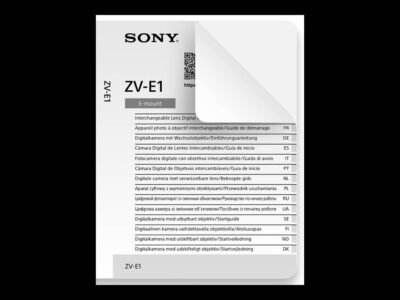
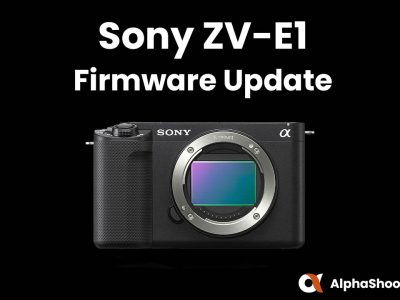
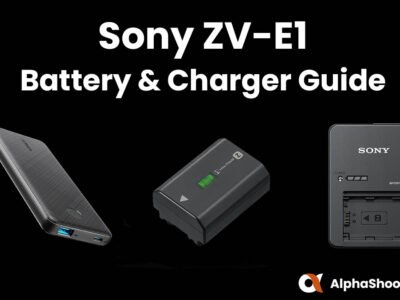
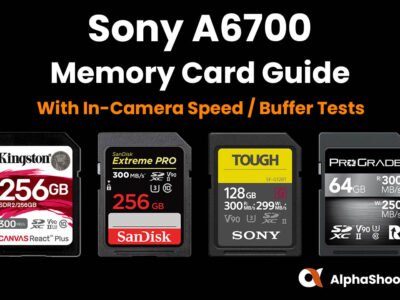

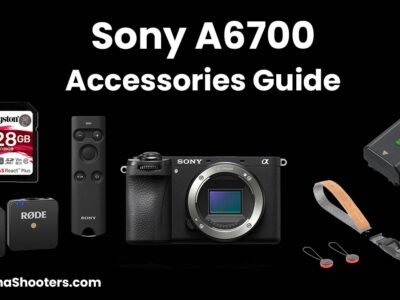
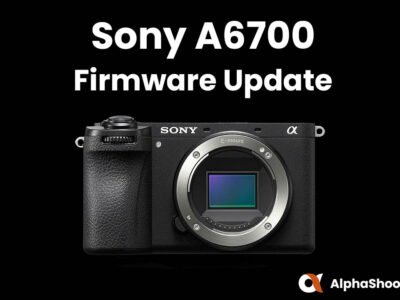
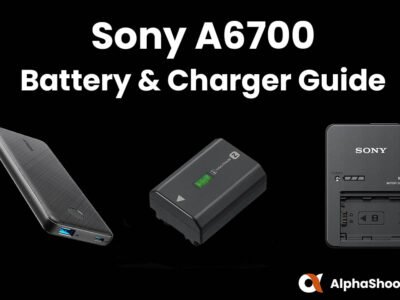



Leave a Reply